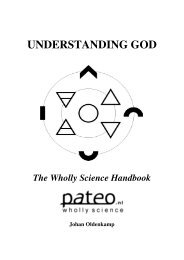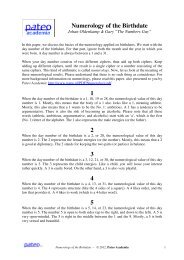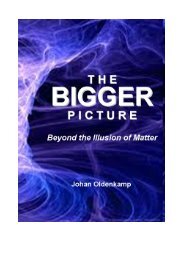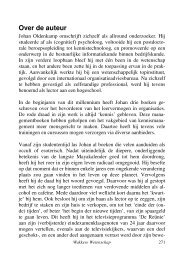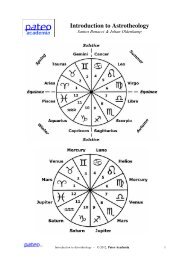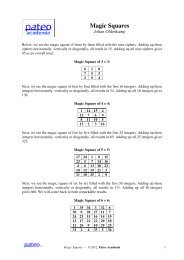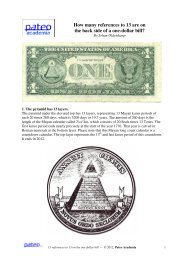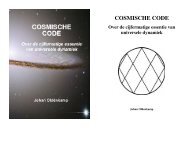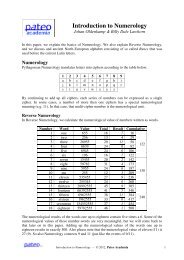WHOLLY SCIENCE - Pateo.nl
WHOLLY SCIENCE - Pateo.nl
WHOLLY SCIENCE - Pateo.nl
You also want an ePaper? Increase the reach of your titles
YUMPU automatically turns print PDFs into web optimized ePapers that Google loves.
Time is a function of space and identity, as stated in the beginning of<br />
this paragraph. In order to determine the time of day, we need to<br />
know both the identity that experiences this time and the location in<br />
space of this identity. The relative position of this identity on the<br />
rotating crust of Mother Terra related to the direction towards Father<br />
Helios determines the time of day for this identity on that location.<br />
Our clock divides the period from midnight until midday into twelve<br />
hours. The first hour starts at midnight and the twelfth ends at midday.<br />
Meridiem is Latin for mid (meri) day (diem).<br />
These are the twelve hours before (or ante in Latin)<br />
meridiem, abbreviated as ‘am’. The abbreviation of<br />
‘pm’ means post (meaning after) meridiem. The<br />
period from midday until midnight also lasts twelve<br />
hours. In full daily circle, the analog clock goes<br />
round twice. The first round represents the inner spiraling phases of<br />
Earth and Air. Next, the second round corresponds to the outer spiraling<br />
phases of Water and Fire.<br />
The rotation of Mother Terra around her vertical axis causes the experience<br />
of the four phases of a natural day. In fact, the su<strong>nl</strong>ight<br />
rhythm rules the experience of time on a daily basis.<br />
Su<strong>nl</strong>ight also rules the yearly experience of time. Let us refer to<br />
the daily period from sunrise until sunset as lightness, and daily period<br />
from sunset until sunrise as darkness. At the day of the winter<br />
solstice, there is maximum darkness and minimum lightness. The<br />
opposite is true for the day of the summer solstice, with a maximum<br />
amount of lightness and a minimum amount of darkness. Exactly in<br />
the middle between both solstices, we find the equinoxes. Both at the<br />
vernal equinox and the autumnal equinox, the length of the lightness<br />
period and the length of the darkness period are precisely equal.<br />
48<br />
Wholly Science – Understanding the Process of Creation<br />
Wholly Science – Understanding the Process of Creation 49





